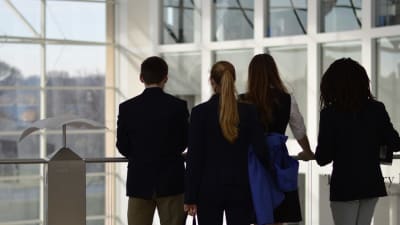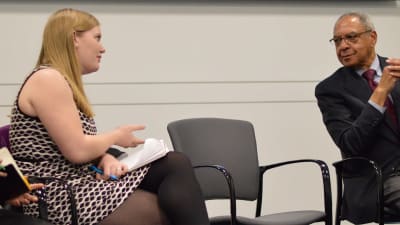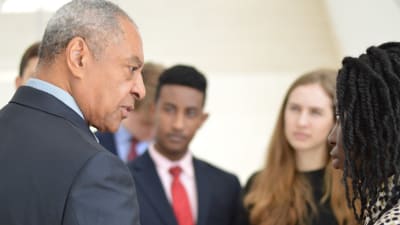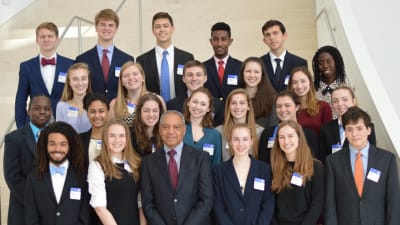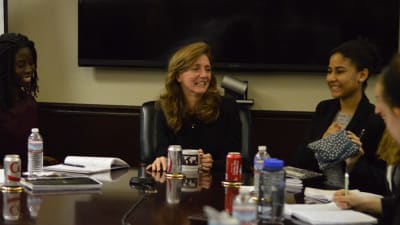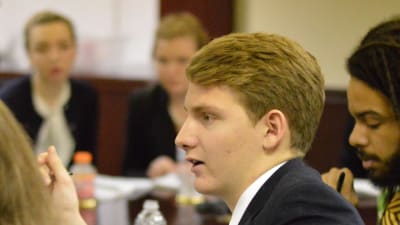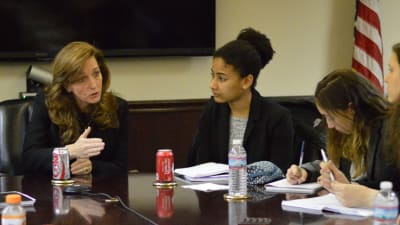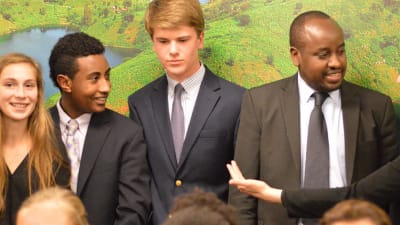Spring 2016 investigates Rwandan Genocide
After the Holocaust the United Nations overwhelmingly passed the Genocide Convention, which stated that “genocide…is a crime …which [we] undertake to prevent and to punish.” In other words, “never again.” But how do we prevent and punish genocide? How serious is the world about this commitment? There is no better example of the world’s uncertainty toward genocide than the subject of this week’s case study: the 1994 Rwandan genocide.
Our exploration began on Saturday evening with a viewing of the PBS Frontline documentary Ghosts of Rwanda. The late-night viewing is an SEGL tradition–it marks the end of the first week’s “settling in” and the beginning of the difficult leadership work that is an SEGL semester. The film documents the 1994 Rwandan genocide and the world’s response (or lack of a response), and examines many of the ethical choices made during the conflict. The conversation that followed was compelling and emotive, and continued into dormitory rooms after hours.
Three of the leaders featured in the documentary are longtime SEGL guest speakers, and we met with all three this week.
First up was a videoconference with Carl Wilkens, who was the head of the Adventist church’s relief mission in Rwanda during the genocide. He was the only American to stay behind in 1994, and is most well-known for (among other acts) saving an entire orphanage from Interahamwe machetes. To SEGL graduates, he is a winner of our coveted “Golden Mug” award, which our graduates give to the speaker who has made the biggest difference in their lives.
Wilkens is the founder of World Outside My Shoes, a genocide prevention NGO that speaks with students and educators around the world. The students asked him a wide range of questions–some personal, some political–and listened intently as he carefully and thoroughly addressed each one.
(Carl was an honorary SEGL teacher last summer when we visited Rwanda with him. To learn more about the trip, visit our SEGL in Rwanda page.)
On Monday morning we traveled to the United States Institute of Peace, where we met with with USIP Board Vice Chair George Moose. Moose’s diplomatic career is storied, including serving as U.S Ambassador to several countries. We speak with him in part because he was Assistant U.S. Secretary of State for Africa during the genocide.
Before he spoke, we met with USIP’s Ann Louise Colgan, who heads the Institute’s Global Peacebuilding Center. She explained USIP’s educational mission, shared resources with students hoping to work against genocide, and promoted the International Day of Peace later this month. (SEGL graduate Allie Douma, who took advantage of USIP’s resources when creating her SEGL social venture project, is featured on the USIP website; click here for more.)
Then Moose took center stage. He answered questions from students about the U.S.’s (and his own) role in Rwanda, “lessons learned” from Rwanda, and preventing genocide in the future. As he spoke, the students recognized his distinctive style of speaking: Whereas Wilkens is an activist, Moose is an accomplished diplomat. Each position can create good in the world, and each position requires a different presentation style. Thinking about the limitations and power of each role, as well as the style needed to carry out each role effectively, will help our students craft their ideal career paths.
On Wednesday morning, we traveled to the United Parcel Service’s DC headquarters (just two blocks from the SEGL residence) to meet with Laura Lane, UPS’s President of Global Public Affairs. Lane was effectively in charge of the U.S. Embassy in Rwanda during the genocide and was tasked with evacuating all Americans from the country when the genocide hit. She also knew Carl Wilkens, and the juxtaposition of the two accounts–Wilkens’s choice to stay and Lane’s decisions that helped keep all the other Americans safe from harm–was powerful and instructive. She discussed the many ways in which she helped Rwandans leave the country as “honorary Americans” as well as her regrets over not staying. Our 100 minutes with her flew by, but there is no doubt that her “one person can make a difference” message will stick for a long, long time.
After a quick lunch, we took the Metro to the Rwandan Embassy, where we met with officials who had direct experience with the genocide. Hearing about Rwanda’s growth and political choices post-genocide was encouraging to many students; it also left them with important questions about the best way to reconcile after conflict and whether a U.S.-style democracy is right for all nations.
After our trip to the Embassy, we made a quick transition to Books and Basketball, our weekly service experience with first and second graders at a low-income DC public school. More on that in an upcoming blog post!
On Saturday morning we traveled to the U.S Holocaust Memorial Museum for a special tour before the museum opened. (Thanks to SEGL board member Jesse Nickelson, who is Director of Youth and Community Engagement at USHMM, for this opportunity!) The experience will allow us to investigate the roots of the 20th century’s most notorious genocide: what small steps led to such a huge tragedy?
Next week, we explore the Israeli-Palestinian Conflict.


